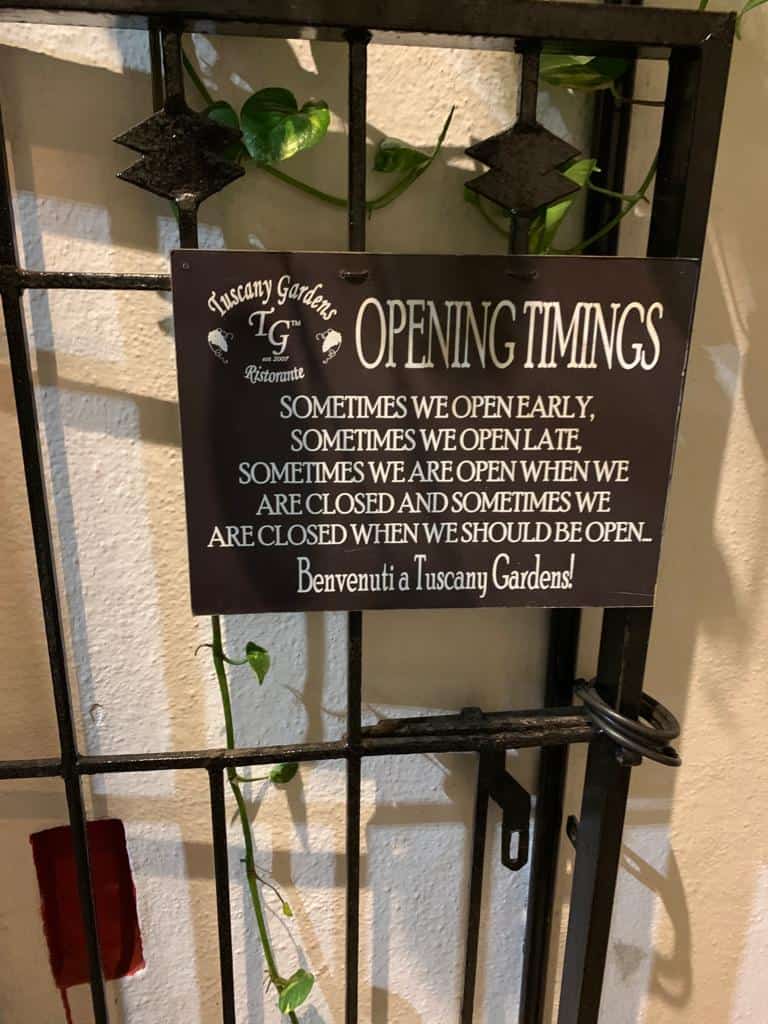Sales is crucial to growth of a small business. There is no magic formula to suddenly increase sales for a small business. Each business owner will have to follow a series of well thought out strategies to build a business that can sustainably grow over time. All good things take time.
This article gives a small business owner effective strategies to boost sales consistently. The points covered here are comprehensive for a small business owner.
A small business will have to do the following to boost sales consistently over time. These learnings are based on my interactions with successful small business owners over the last 10 years.
- Understand the right sales strategy for the business
- Identify the right target customer
- Develop the right product to solve your customer’s problem
- Partner with local businesses
- Build an online presence to boost sales
- Promote your small business online
- Choose the right marketing strategy to boost sales
- Have an integrated marketing and sales plan
Once you have all these elements addressed, you will see your sales pick up and grow consistently over time
A related article here also talks about specific techniques for small businesses to increase sales.

Understanding the 4 basic sales strategies | Sales 101
There are broadly 4 types of sales sales strategies recognised widely by academics and industry experts.
Script based selling
Script-based selling, also known as scripted selling or also as scripted sales, refers to a sales approach where sales agents follow a documented script or set of clearly laid out talking points during their conversations with potential customers.
The script outlines what to say, when to say it, and how to handle various customer questions or objections.
The primary objective of using documented scripts is to ensure that sales agents have a consistent and controlled message to all prospective customers. This is used to control a sales process where the degree of variability is low and the product being sold has 1-3 key USPs that can be highlighted in a scripted call.
This can help maintain a cohesive brand image and ensure that critical product or service information is consistently conveyed.
Script based selling should be used in the following circumstances
- When the product or service needs a detailed explanation and a lack of script can cause errors
- If your business is in a regulated industry like financial services, insurance, pharma etc.
- When there is a need to maintain consistency in your messaging
- When there are a common set of objections to be handled
- When you have new sales agents who need training
‘Satisfying a need’ based selling
This sales strategy is an approach that focuses on identifying and meeting the specific needs of a customer. This involves a more consultative and customer-centric approach compared to traditional selling techniques
This approach is particularly effective in complex sales environments where customers have specific, often sophisticated needs, and where building long-term customer relationships is important.
It’s widely used in B2B (business-to-business) sales and in industries like technology, healthcare, and consulting services.
Typical situations where this need-satisfying type of selling is employed are
- When the offering is a complex product or service
- Typically the sales cycles are very long, ranging from 3-12 months
- Happens in a business to business transaction
- When the offering can be highly customised
- The sales agent plays a role of an advisor or educator
Consultative selling
Consultative selling is a sales approach where the salesperson acts more like a consultant than a traditional salesperson. The focus in this method is on understanding the needs, challenges, and goals of the customer, rather than just promoting a product or service.
Consultative selling focusses on the customer and not the solution being sold. Small businesses using this approach invest time in understanding the customer’s unique situation, needs, and challenges.
Consultative selling is effective in complex and highly competitive markets where customers look for value beyond the product, such as expertise, customization, and ongoing support.
It’s commonly used in B2B (business-to-business) environments but can be applied in various sales contexts. Some of the situations where consultative selling is valuable is below
- Sales in situation where customers have multiple decison makers
- Products and solutions are high value and is a significant investment for the customer
- There is an element of technical sales and options for customisation
- Where the scope includes repeat business and / or long term contracts
Strategic partner selling
This sales approach goes well beyond traditional selling methods by focusing on creating and nurturing a deep, long-term partnership between the seller and the customer. In this model, the relationship is not just transactional but strategic and collaborative, aiming to create mutual value over time.
The aim is to create value for both partners. This means going beyond just selling products or services and could involve finding ways to increase efficiency, reduce costs, or help the customer access new markets or technologies.
This approach requires a significant investment of time and resources from the seller but can lead to more sustainable and profitable long-term business relationships. The following situations are best suited for a strategic partner selling model.
- The service or offering is very niche or specialised
- The target customer base is very limited
- When a small business is scaling up business operations
- If existing clients and customers need ongoing support and service
- When market feedback is critical for success and is needed on a realtime basis
- When there is immense potential for collaborative product development
Identifying target customer for small businesses

The foundational step to achieving success in business is to understand who is your primary customer. This will help decide all other activities such as the best approach to sales, the best go-to-market strategy, the resources to be spent across channels etc.
There are 6 key steps involved in identifying a target customer for your small business. Follow these steps to ensure that you are doing it the right way.
Do thorough market research
- Start by researching your industry and market to understand its size, trends, and potential opportunities.
- Analyze your competitors to see who they are targeting and how they are doing it
- Do surveys, go to events to get a first hand experience of your targeted ideal customer
- Consider being a part of your customer’s daily life to understand un-stated pain points
Create customer personas based on your research
- Develop detailed customer personas that represent your ideal customers. These personas should include demographic information (age, gender, location, income), psychographic details (lifestyle, values, interests), and behavioral traits (buying habits, pain points).
Analyse your existing customers to find common patterns
- If you already have customers, analyze their characteristics and behaviors to identify common traits. Look for patterns among your most loyal or profitable customers.
Segment your market based on customer personas
- Divide your target market into segments based on factors such as demographics, geography, behavior, or psychographics. This can help you better tailor your marketing efforts.
- Combine what you learnt from your market research as well as what you learnt from your existing customers
- Prioritise the segments you first want to address based on your product offering and capability in your business
Seek feedback, both positive and negative
- Encourage feedback from your existing customers to improve your products or services and refine your targeting strategies.
- Use negative feedback constructively to understand your own shortcomings
Finally, identify pain points and how important those pain points are for your customer
- Determine the problems or challenges your target customers face that your products or services can address. Solving these pain points can be a key selling point.
- The key here is to identify the most important pain point for your customer
- The same pain can have a varying degree of importance for various customers
- Choose the customer for whom the pain is the highest so that they can value your offering at its highest
Develop a product to solve your customer’s problem

This follows from identifying your target customer. There is a scientifically proven step by step approach a small business owner needs to take in order to deliver a product that sells well. The following steps are crucial to a successful product
Validate your customer’s pain point
This is the most crucial step in the process. If there are mistakes made in this step, they get amplified across the next steps and the whole new product development cycle becomes a pointless exercise.
The below two points are extremely important for the small business to get right.
- Customer Validation: Ensure the pain point is significant and widespread enough to warrant a solution. This means, that the pain-point should be a real pain point for a customer and not just an irritant. This can be validated by only spending quality time with customers.
- Feasibility Study: Determine if it’s technically and financially feasible for your business to address this pain point. This is needed to ensure that as a small business with limited resources, you are 100% sure on the path you are committing to.
During my time at Intuit, while I visited 200+ small businesses, we spent majority of the time with small businesses to understand that their pain point is the real pain point.
We had to observe small business owners in their work setting and take note of unstated expressions, reactions etc. to assess the degree to which the pain points really mattered.
Develop a concept to solve the problem
You need to think of a solution as a small business owner, which you can deliver, that will solve for the customer’s pain point completely.
- Brainstorming Sessions: Involve your team in generating various ideas to solve the identified pain point.
- Concept Testing: Present your ideas to a small group from your target market and gather feedback.
As a small business owner, you need to have a pulse on your customers at all times.
Develop a prototype
- Design a Prototype: Create a basic version of your product that solves the pain point. This is usually also called as a minimum viable product, where it solves the most basic functionality but is not ready to ship to a large audience
Test the prototype with your customer and take feedback
- User Testing: Have users interact with the prototype and provide feedback. Also, use your own observation of their expressions and reactions while using the product.
This is a great way to understand how future customers will interact with your product and will help you anticipate future problems and product pipelines
Iterate and improve your product
- Iterative Development: Refine your product based on user feedback, improving its effectiveness in solving the pain point.
Rapid testing and failing is key to making your product built for success.
Partner with local businesses: Strategic selling 101

This is a secret weapon that not many small businesses use. Partnering with other local small businesses can extend the reach of a small business into markets outside their key locations. This is also a proven way to acquire capabilities for a small business
Collaborative marketing efforts
Collaborative marketing allows businesses to share the costs of advertising and promotional activities. This can include shared ad space, joint social media campaigns, or co-hosting events.
By pooling resources, each business can achieve more visibility than it could alone, at a fraction of the cost.
Businesses can promote each other’s products or services to their respective customers. For example, a local café might partner with a bookstore to offer discounts to each other’s customers. This cross-promotion can lead to increased sales as customers are introduced to products or services they might not have otherwise considered.
Local Supplier Partnerships
Partnering with local suppliers not only supports the local economy but also provides a marketing angle. Customers often appreciate and seek out locally sourced products.
Collaborating with your local suppliers on product development is a superpower that very few small businesses leverage. Local suppliers might offer insights into new trends, materials, or processes that could benefit your business massively.
Hosting Joint Events
Organizing events like workshops, seminars, or festivals can attract a larger crowd than individual efforts. This also provides a platform for both businesses to showcase their products or services.
Organising joint workshops and seminars in addition to events can attract a larger crowd than individual efforts. This also provides a platform for both businesses to showcase their products or services.
This will also bring down the cost of building awareness and acquiring customers when shared by two or more parties.
Doing this often will have a clustering effect where all collaborating small businesses will benefit more than the benefit if the small businesses do events on their own. This impact is seen in car dealerships that are clustered together in a given county.
How can a small business increase sales this way?
Simply put, collaboration with local. businesses will have the following positive impact on the small business which will lead to an eventual increase in sales
- Improving the impact and ROI of marketing
- Expanded reach to new customers
- Increase in learning and understanding of your customer
- Reduced marketing costs
- Cross promotion opportunities
Build an online presence to help boost sales

There are two critical things you need to do as a small business if you want to increase your sales in today’s digital age
Build a professional website
- Your website is often the first point of contact with potential customers. Ensure it is user-friendly, mobile-responsive, and reflects your brand’s values and offerings.
- Include essential information like your business history, services or products, contact information, and customer testimonials.
If you have the budget and the need, hire a good SEO agency that will help you drive organic search traffic to your website which builds over time. This will give you good leads as if you sell to businesses or it will give you a platform that you control for e-commerce
Get yourself a Google Business listing
Creating a Google Business Profile is an important step for all small businesses to improve their online visibility, particularly in local search results. Its fairly easy and straightforward to create and google has many self directed guides to help you do it.
Some of the key benefits of a google business listing are
- It will give your small business visibility in google search and in google maps so customers can find you easily
- You can showcase your business with photos and videos easily
- Its free to create, give customers an easy way to contact you through phone numbers
- Getting customer reviews and testimonials about your small business is easy
- Multiple integrations such as managing appointments, reservations etc available easily
Getting a google business listing is essential if you want to get discovered online
Promoting your small business online to boost sales
Promoting your small business online is not straightforward, but i would recommend the following must-do’s as a starting point.
Social Media Presence
Establish a strong presence on social media platforms where your target audience is most active. Regularly post engaging content, interact with followers, and use targeted ads to reach a broader audience if you have a budget dedicated for that.
Local SEO
If your business serves a local area, optimise your online presence for local search. This includes claiming your Google My Business listing, getting listed in local directories, and using local keywords in your content.
I have already spoken at length about the importance of a google business listing page above.
Offer Online Promotions
Attract customers with online-only discounts, promotions, or limited-time offers. These can incentivise first-time purchases and attract attention to your business. This will help increase awareness of your small business.
Continue this activity in collaboration with other businesses on a regular basis to keep building on the awareness.
Online Community Engagement
In addition to participating in your local community physically, building and engaging with an online community is critical to your success as a small business.
Participate in online forums and communities related to your industry. Share your expertise and engage with potential customers without overtly selling your products or services.
Integrated marketing and sales plan as a small business

The following steps give you a detailed step by step guide to creating an integrated sales and marketing plan for your small business which is essential for you to increase your sales.
- Understand Your Market and Audience:
- Research your target market and audience.
- Identify customer needs, preferences, and buying behaviors.
- Analyze competitors and understand your unique selling proposition (USP).
- Define Clear Objectives:
- Set specific, measurable, achievable, relevant, and time-bound (SMART) objectives for both sales and marketing.
- Ensure that these objectives align with your overall business goals.
- Develop a Unified Strategy:
- Create a strategy that aligns sales and marketing efforts. This should include the tactics, channels, and resources needed to achieve your objectives.
- Determine the key messages and brand positioning that will be consistent across all sales and marketing materials.
- Allocate Budget and Resources:
- Decide on a budget for your sales and marketing activities.
- Allocate resources (like team members and technology tools) effectively to support these activities.
- Choose Appropriate Channels and Tactics:
- Select the most effective channels (social media, email, content marketing, advertising, events, etc.) based on your audience and goals.
- Develop specific tactics for each channel, considering both sales and marketing perspectives.
- Integrate Sales and Marketing Teams:
- Encourage collaboration between sales and marketing teams. Regular meetings and communication are key.
- Develop shared metrics and goals to ensure both teams are working towards common objectives.
- Implement Technology and Tools:
- Utilize CRM (Customer Relationship Management) systems and marketing automation tools to streamline processes and gather data.
- Ensure these tools are used by both sales and marketing for consistency.
- Content Creation and Distribution:
- Develop content that supports both sales and marketing objectives.
- Tailor content for different stages of the customer journey.
- Training and Development:
- Train your team on the integrated approach, ensuring everyone understands their role in the plan.
- Keep the team updated on product knowledge, market trends, and customer feedback.
- Monitor, Measure, and Adjust:
- Regularly review the performance of your sales and marketing activities against your objectives.
- Be prepared to adjust your strategy and tactics based on performance data and changing market conditions.
- Customer Feedback and Adaptation:
- Collect and analyze customer feedback.
- Use insights to adapt your sales and marketing strategies.
This set of activities will drive your day-to-day operations in your business which should become a routine part of how you run your small business.
Key marketing strategies to help increase sales
Based on my experience of working with small businesses, i would striongly recommend all small business owners adopt to the below 6 marketing strategies that will give you the maximum benefit with a direct impact to your sales.
Digital Marketing
Utilize online platforms like social media, email, and search engines. This includes SEO (Search Engine Optimization) to improve online visibility, content marketing to provide value through informative content, and PPC (Pay-Per-Click) advertising for immediate traffic.
Personalization
Personalizing your marketing efforts, such as using a customer’s name in emails or offering customised recommendations, can significantly enhance customer experience and drive sales.
High-Quality Product Displays and Descriptions
Online, your product images and descriptions are vital. They should be high-quality, informative, and appealing to encourage purchases. They should be visually appealing and attractive to keep customer’s attention.
Event Marketing and Sponsorships
Participating in or sponsoring events can increase brand visibility and engagement. I would recommend this approach to only businesses that have the spending power and have aspirations to grow to become a large business as this will do wonders for the brand.
Email Marketing
Sending targeted, well-designed emails about promotions, new products, or useful content can help keep your brand top-of-mind and drive sales.
To do this, small businesses should strive to collect and build their own customer database of email IDs and phone numbers which they can rely on as a captive audience.
Referral Programs
Encouraging existing customers to refer friends can be an effective way to gain new customers. Reward them with something nice when you success through such programs.
